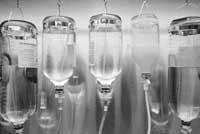Can we change genes?
When some gene data is altered, proteins are synthesized poorly and therefore diseases occur. Therefore, biochemists are looking for solutions to gene mutations. But gene therapy is not easy. As the entire genome is in all cells, in all or at least in all cells of an organ repairs must be made. Viruses in nature do so, so scientists have started using artificially modified viruses.

In the laboratory, the virus removes the original DNA and introduces a ‘healthy’ gene to be repaired. Subsequently, the patient is infected with this artificial virus that mixes the gene with the genetic information of the cells. Thus, the cell contains twice this gene, defective and repaired. At that time there are two copies of the gene, but what needs to be activated is a good copy. The original defective copy is the only one found in the place that is assigned to it naturally.
New York Cornell University biochemists investigate how to overcome these problems. So far they have managed to change a single mutation gene in a specific place in the genome. The success of this technique is a breakthrough in the field of genetic diseases.





